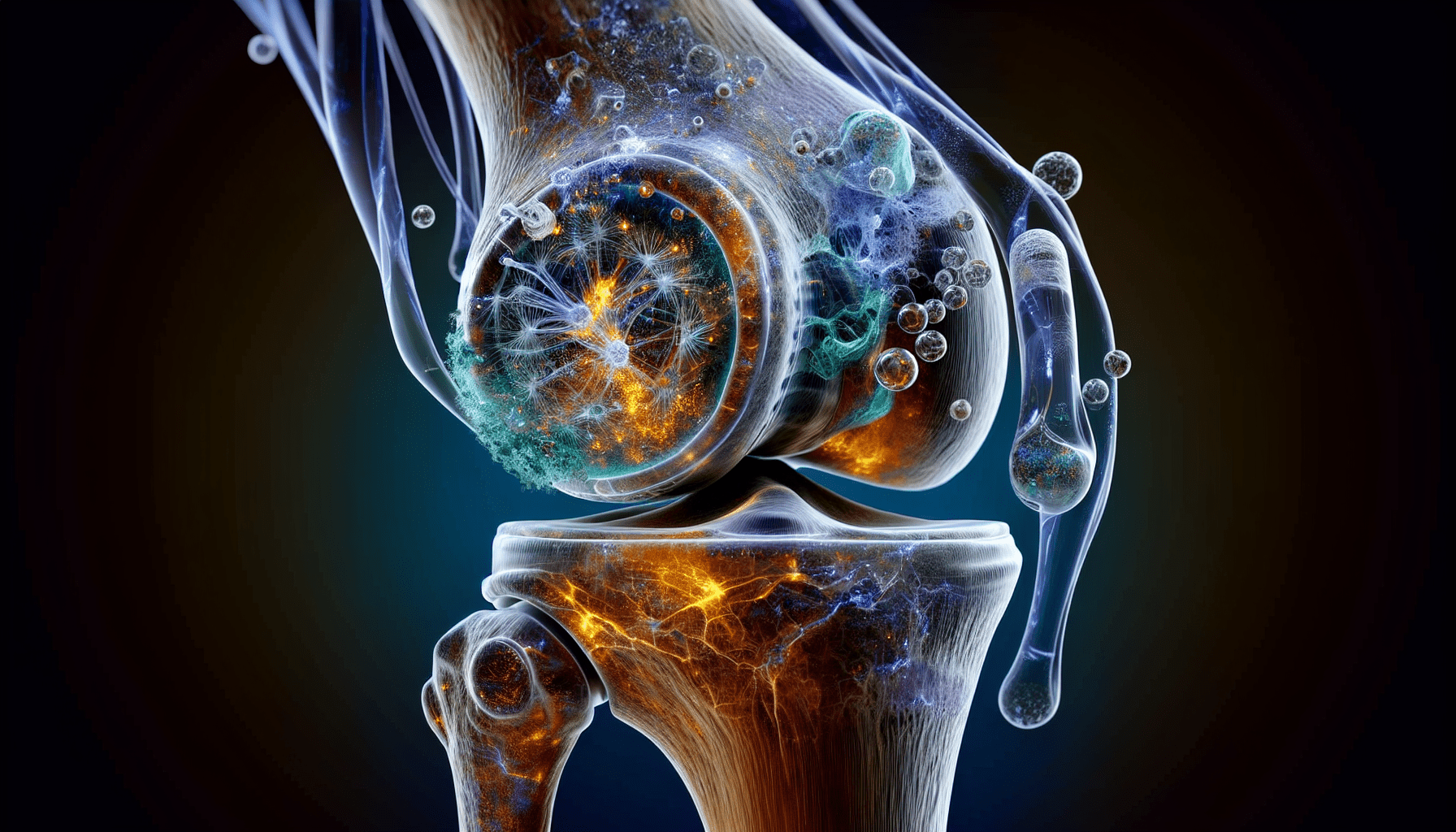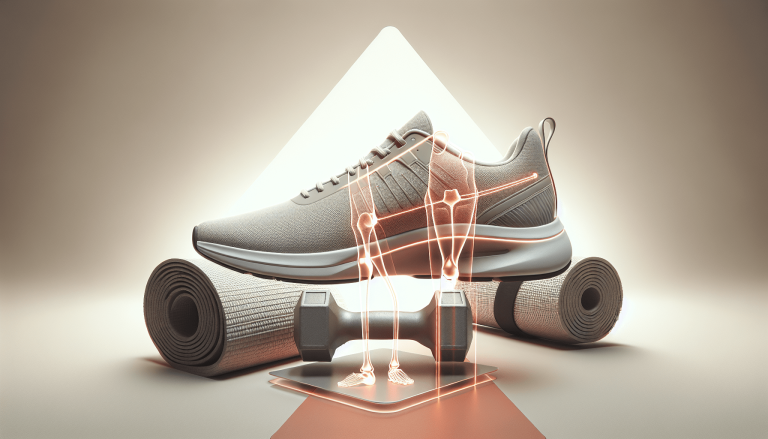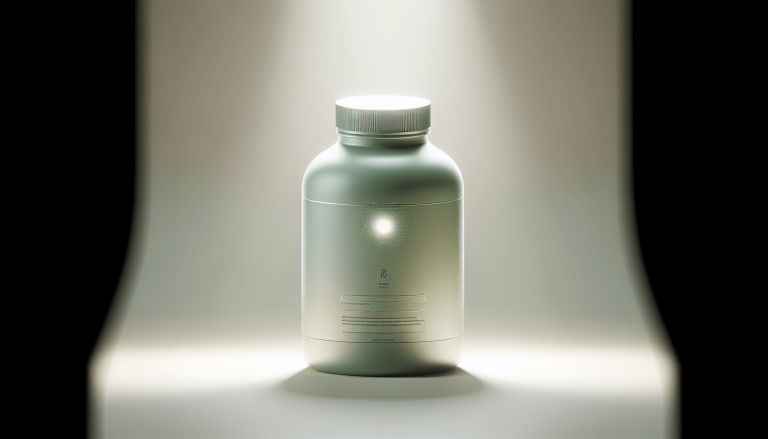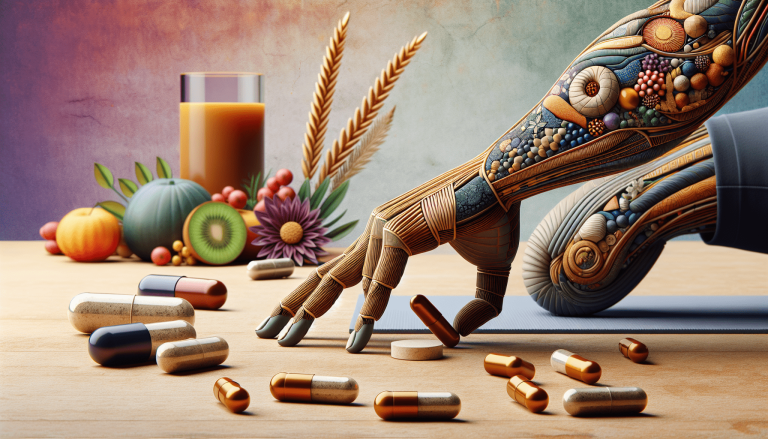Can You Regenerate Joint Fluid?
Welcome to the fascinating world of joint health! In the article “Can You Regenerate Joint Fluid?”, you’ll discover how your body responds to joint wear and tear and explore whether it’s possible to naturally replenish this essential lubricant. You’ll learn about the factors that influence joint fluid production, potential lifestyle changes, and innovative treatments that could help you keep your joints moving smoothly and pain-free. Dive into the latest research and practical advice to find out how you can support your joints for a healthier, more active life! Have you ever wondered if you can regenerate joint fluid? Maybe you’ve been feeling a bit stiff lately, and are curious if there’s hope for rejuvenating your joints. Don’t worry, you’re not alone, and the good news is that there’s plenty of information to help you understand and potentially enhance the health of your joints.

What is Joint Fluid?
Joint fluid, also known as synovial fluid, is a thick, straw-colored liquid found in the cavities of synovial joints. Its primary role is to reduce friction between the articular cartilage of synovial joints during movement. It also serves as a lubricant, shock absorber, and nutrient carrier for the tissues inside your joints.
The Function of Synovial Fluid
Synovial fluid plays multiple essential roles in maintaining the health and functionality of your joints.
- Lubrication: Makes joint movements smooth and pain-free.
- Shock Absorption: Helps absorb and distribute loads applied to the joint.
- Nutrient Distribution: Transports nutrients to cartilage which lacks its own blood supply.
- Waste Removal: Helps remove cellular waste from the cartilage.
The Composition of Synovial Fluid
The primary components that make up synovial fluid include:
| Component | Function |
|---|---|
| Hyaluronic Acid | Provides the fluid with its viscous consistency |
| Lubricin | Reduces friction between cartilage surfaces |
| Proteins and Enzymes | Various roles, including nutrient transport |
| Cells | Mainly macrophages that remove debris |
Causes and Effects of Joint Fluid Loss
Joint fluid can diminish due to various reasons. Understanding these can help clarify why you might be experiencing joint discomfort and how to manage it effectively.
Aging
As you age, the production of synovial fluid naturally decreases, leading to wear and tear on the joints. This reduction can contribute to conditions like osteoarthritis.
Injuries and Overuse
Physical trauma and repetitive stress on joints can degrade synovial fluid quality and quantity. Sports injuries, poor posture, and even certain job-related activities are common culprits.
Inflammatory Conditions
Autoimmune diseases such as rheumatoid arthritis can cause inflammation that reduces the effectiveness of synovial fluid. The inflammation can lead to the destruction of joint tissue, further aggravating the problem.
Lack of Movement
Physical activity helps stimulate the production and maintenance of joint fluid. A sedentary lifestyle can lead to decreased synovial fluid, causing stiffness and discomfort.
Symptoms of Diminished Joint Fluid
If you suspect that you may be experiencing a decline in joint fluid, look out for these tell-tale symptoms:
Joint Stiffness
A common indicator of low synovial fluid is stiffness, especially after periods of inactivity. You may find it difficult to move your joints freely.
Pain and Discomfort
Reduced lubrication results in increased friction, leading to pain. This discomfort is often most noticeable during physical activities.
Swelling
In some cases, reduced joint fluid can lead to swelling and inflammation, exacerbating pain and discomfort.
Limited Range of Motion
Difficulty in fully extending or flexing your joints can indicate a reduction in synovial fluid. This symptom is usually noticeable during physical activities like walking, bending, or lifting.
Can You Regenerate Joint Fluid Naturally?
The prospect of regenerating joint fluid might seem promising, and the good news is that there are several natural methods to help boost the health of your joints.
Diet and Nutrition
Your diet plays a crucial role in the production and maintenance of synovial fluid. Consuming foods rich in omega-3 fatty acids, antioxidants, and vitamins can significantly aid in joint health.
- Omega-3 Fatty Acids: Found in fish like salmon, mackerel, and flaxseeds. These work by reducing inflammation, thereby improving the condition of your joints.
- Antioxidants: Fruits and vegetables like berries, spinach, and kale are packed with antioxidants that fight inflammation and oxidative stress.
- Vitamins: Vitamins C and D are particularly beneficial. Vitamin C helps in collagen production, while Vitamin D is crucial for bone health.
Hydration
Water is integral to maintaining the viscosity and volume of synovial fluid. Ensure you’re drinking plenty of water throughout the day to keep your joints well-lubricated.
Exercise
Regular physical activity stimulates the production of synovial fluid and helps maintain joint mobility. Opt for low-impact exercises like swimming, cycling, or tai chi, which are gentle on the joints while still providing the necessary stimulation.
Supplements
Certain supplements can aid in the production and maintenance of joint fluid. Some popular options include:
| Supplement | Benefits |
|---|---|
| Glucosamine | Aids in the formation of cartilage |
| Chondroitin | Helps retain water in the cartilage |
| MSM (Methylsulfonylmethane) | Reduces inflammation and promotes joint health |
Weight Management
Carrying extra weight places additional stress on your joints, particularly in the knees and hips. Maintaining a healthy weight can drastically reduce the wear and tear on your joints, allowing them to function more efficiently.
Rest and Recovery
Don’t underestimate the power of adequate rest. Your body needs time to repair and regenerate tissues, including the synovial fluid in your joints. Ensure you’re getting sufficient quality sleep.
Medical Treatments to Restore Joint Fluid
Sometimes, natural methods might not be enough, and medical treatments become necessary. Below are some medical interventions to consider:
Viscosupplementation
This procedure involves injecting hyaluronic acid directly into the joint capsule. The injected substance mimics the natural synovial fluid, providing immediate relief from pain and improving mobility.
Corticosteroid Injections
For severe inflammation, corticosteroid injections can help. These injections reduce inflammation and pain, offering short-term relief. However, they don’t contribute to the regeneration of synovial fluid and should be used sparingly.
Platelet-Rich Plasma (PRP) Therapy
PRP Therapy uses your blood cells to accelerate healing in injured or damaged joints. The platelets are injected into the affected joint, where they release growth factors that aid in repairing tissues, including the production of new synovial fluid.
Surgery
In extreme cases, surgical interventions like joint replacement may be necessary. These operations remove damaged joint tissues and replace them with artificial components, resolving the issues related to joint fluid loss.
Emerging Technologies and Research
Research continues to explore new ways to regenerate joint fluid and improve joint health overall. Here are some promising directions.
Stem Cell Therapy
Stem cells have the potential to regenerate various types of tissues, including those in joints. Initial studies show promise in their ability to produce new cartilage and synovial fluid, providing a potential long-term solution for joint issues.
Gene Therapy
This novel approach aims to alter genes within your body to correct deficiencies related to joint fluid production. Though still in early stages, it offers exciting possibilities for future treatments.
Biomaterials
Various synthetic and natural biomaterials are being studied for their potential to mimic or enhance the functions of natural synovial fluid. These could eventually be used as injectable solutions to provide longer-lasting relief.
Preventive Measures
While it’s essential to know how to regenerate joint fluid, prevention is always better than cure. Here’s how you can proactively maintain healthy joints.
Adopt a Balanced Diet
Focus on a diet rich in anti-inflammatory foods. Incorporate plenty of fruits, vegetables, lean proteins, and healthy fats.
Stay Hydrated
Make hydration a priority. Water helps maintain the viscosity of synovial fluid, making it crucial for joint health.
Regular Exercise
Aim for a balanced exercise routine that includes strength training, flexibility exercises, and cardiovascular activities. Regular activity helps stimulate the production of synovial fluid and maintain joint flexibility.
Avoid High-Impact Activities
While exercise is crucial, it’s equally important to avoid activities that place excessive strain on your joints. High-impact activities like running on hard surfaces can exacerbate wear and tear.
Proper Footwear
Wearing the right shoes can make a big difference in joint health, especially for weight-bearing joints like those in your knees and ankles. Opt for shoes that offer good support and cushioning.
Posture and Ergonomics
Maintaining good posture and using ergonomic furniture can mitigate joint stress. Whether you’re sitting at a desk or lifting objects, ensure you’re using the proper techniques to protect your joints.
Myths and Misconceptions About Joint Fluid
There’s no shortage of myths and misconceptions when it comes to joint health. Let’s debunk a few common ones.
Cracking Knuckles Causes Arthritis
Contrary to popular belief, there is no scientific evidence to support that cracking your knuckles leads to arthritis. The sound is caused by the release of gas bubbles in the synovial fluid, not by damage to the joints.
Only Old People Have Joint Issues
While aging is a significant factor, joint problems can affect people of all ages. Factors like injuries, inflammation, and lifestyle choices can lead to joint issues in younger individuals as well.
Supplements Are Cure-Alls
While supplements can be beneficial, they are not magic bullets. They should be used in combination with a balanced diet, regular exercise, and other healthy habits.
Pain-Free Joints Means Healthy Joints
A lack of pain does not always equate to healthy joints. Some degenerative joint conditions can progress without noticeable symptoms until significant damage has occurred.
Frequently Asked Questions
Here are some frequently asked questions that can provide additional clarity on the subject of joint fluid regeneration.
How Long Does It Take to Regenerate Joint Fluid?
The time it takes to regenerate joint fluid varies depending on factors like your overall health, diet, and activity level. Some people may notice improvements within a few weeks of implementing lifestyle changes, while others might take longer.
Can You Increase Synovial Fluid Without Medical Intervention?
Yes, natural methods such as a balanced diet, regular exercise, staying hydrated, and perhaps taking specific supplements can help increase synovial fluid.
Are There Any Side Effects of Viscosupplementation?
The most common side effects include temporary pain at the injection site, swelling, and mild inflammation. These usually resolve within a few days.
Is Stem Cell Therapy Approved for Joint Regeneration?
Stem cell therapy for joint regeneration is still largely experimental and not universally approved. However, ongoing research shows promising potential for future applications.
Conclusion
So, can you regenerate joint fluid? The answer is a resounding “Yes!” There are numerous natural methods, medical treatments, and emerging technologies with the potential to restore and maintain joint fluid. By making informed choices regarding your diet, exercise, and overall lifestyle, you can significantly improve the health of your joints.
Remember, your joints are vital to your overall well-being, so taking steps to look after them is always a good investment. Whether it’s through natural means or medical intervention, there’s plenty you can do to keep your joints healthy and functioning optimally. Now, it’s up to you to take the first step toward better joint health!






